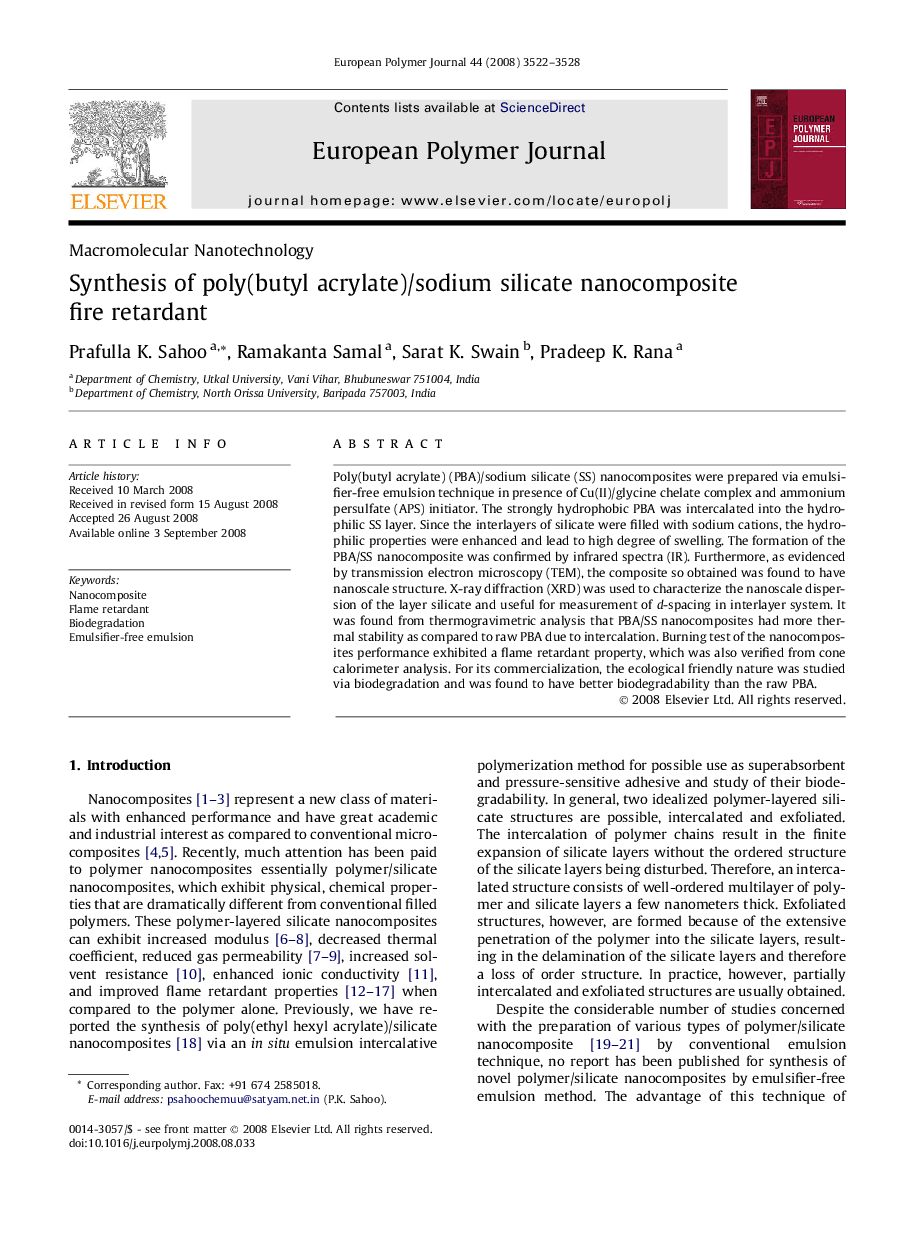| Article ID | Journal | Published Year | Pages | File Type |
|---|---|---|---|---|
| 1400861 | European Polymer Journal | 2008 | 7 Pages |
Poly(butyl acrylate) (PBA)/sodium silicate (SS) nanocomposites were prepared via emulsifier-free emulsion technique in presence of Cu(II)/glycine chelate complex and ammonium persulfate (APS) initiator. The strongly hydrophobic PBA was intercalated into the hydrophilic SS layer. Since the interlayers of silicate were filled with sodium cations, the hydrophilic properties were enhanced and lead to high degree of swelling. The formation of the PBA/SS nanocomposite was confirmed by infrared spectra (IR). Furthermore, as evidenced by transmission electron microscopy (TEM), the composite so obtained was found to have nanoscale structure. X-ray diffraction (XRD) was used to characterize the nanoscale dispersion of the layer silicate and useful for measurement of d-spacing in interlayer system. It was found from thermogravimetric analysis that PBA/SS nanocomposites had more thermal stability as compared to raw PBA due to intercalation. Burning test of the nanocomposites performance exhibited a flame retardant property, which was also verified from cone calorimeter analysis. For its commercialization, the ecological friendly nature was studied via biodegradation and was found to have better biodegradability than the raw PBA.
